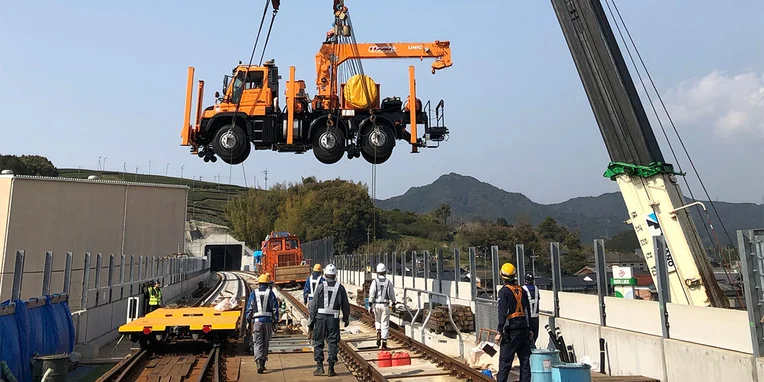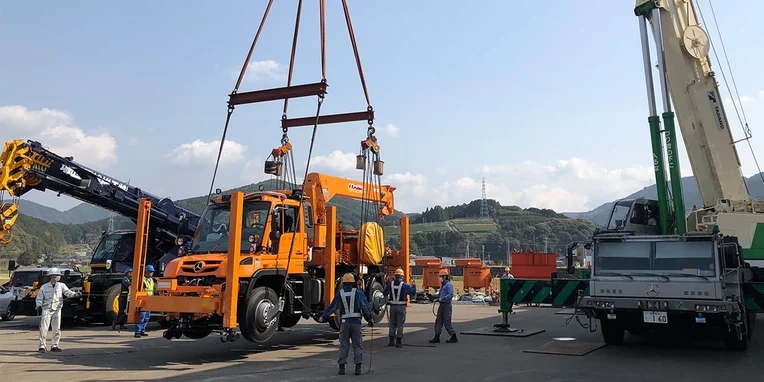Special road-rail vehicles assist in the expansion of the high-speed rail network.
Shinkansen, the Japanese high-speed rail network, is considered to be one of the safest in the world. The trains, which carry the same name as the high-speed network, stand out thanks to their travelling speed up to max. 320 km/h. Expansion of the Shinkansen network is continuous.
Complex rerailing.
At Shinkansen construction sites in Japan, deliveries of Unimog started in 1993 for Hokuriku-Shinkansen (Takasaki - Nagano) and total 83 units were used. The vehicle fleet was modernised for the construction of the Kyushu-Shinkansen (Takeo Onsen - Nagasaki) and Hokuriku-Shinkansen (Kanazawa - Tsuruga) lines and were replaced by 73 new Unimog road-railers from the current model series of implement carriers. The Japanese high-speed network is completely independent from the road infrastructure and large sections of it are elevated. As a consequence, getting on track with a road-railer is a bigger challenge and more spectacular compared to other networks with railroad crossings – they are lifted onto the rail track by a heavy-duty crane.













